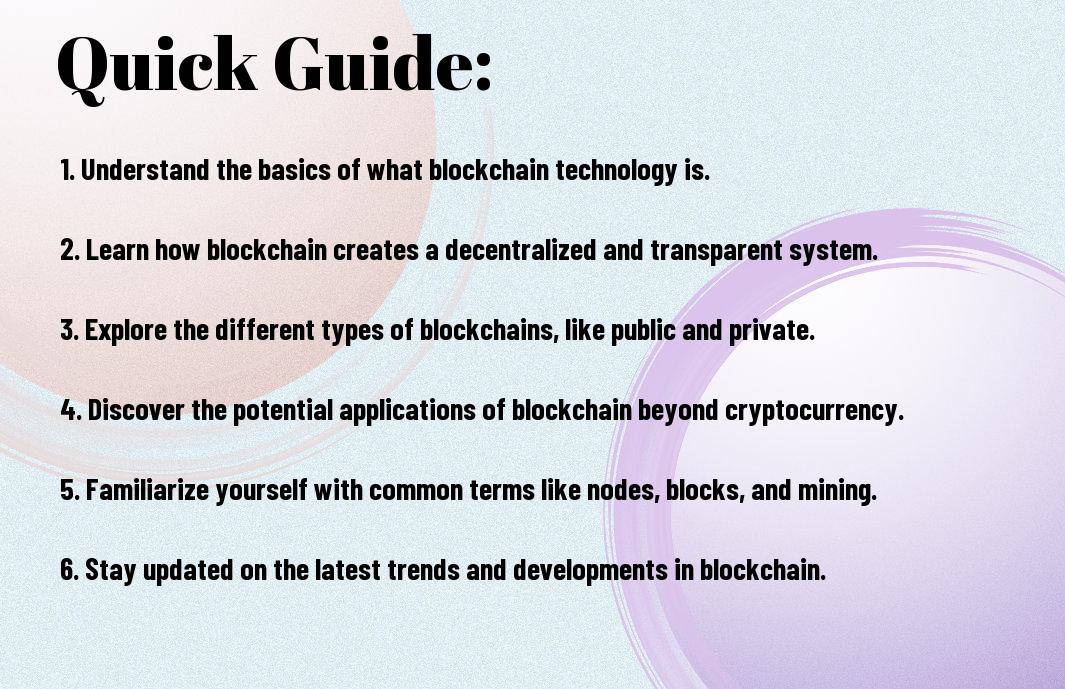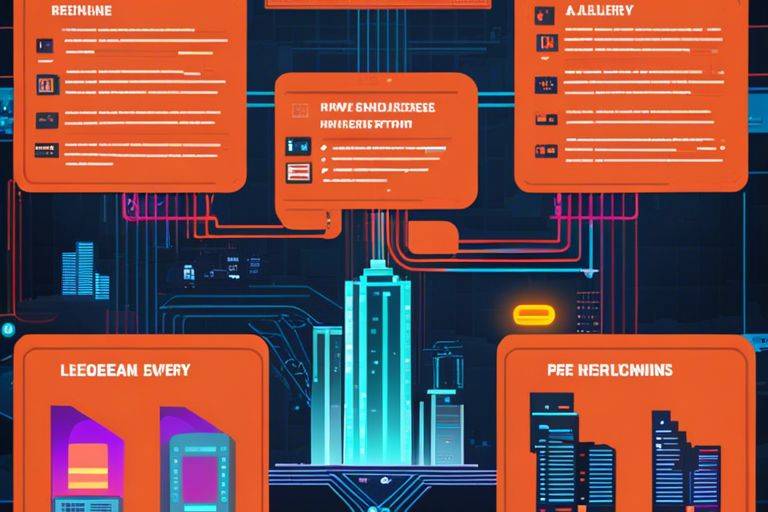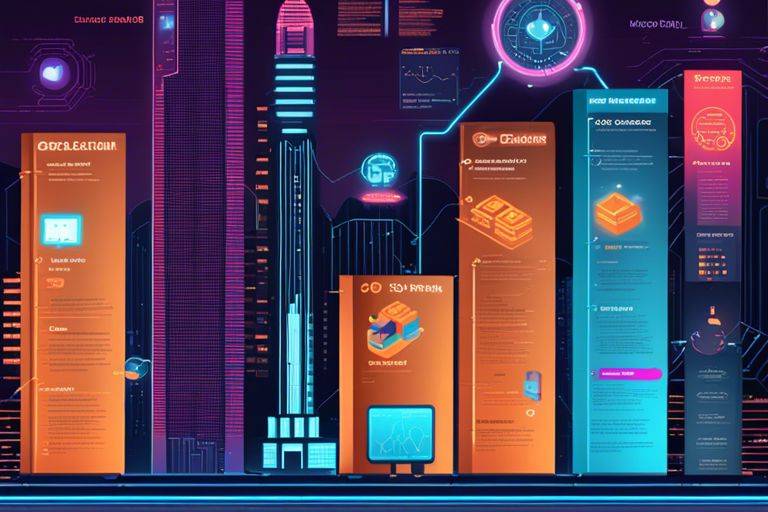Blockchain for Beginners! This comprehensive guide is designed to introduce Blockchain technology to beginners and shed light on one of the most disruptive innovations of our time. Blockchain may seem like a complex concept at first, but with this easy-to-understand overview, you’ll learn the basics of how it works, its potential applications, and why it’s considered a game-changer in various industries.
Key Takeaways:
- Blockchain is a decentralized ledger: Blockchain technology allows for the secure and transparent recording of transactions without the need for a central authority.
- Transparency and security: The data recorded on a blockchain is immutable, transparent, and secure, making it an ideal technology for various industries.
- Smart contracts: Smart contracts are self-executing contracts with the terms directly written into code. They automate and enforce agreements without the need for intermediaries.
- Cryptocurrency: Blockchain is the underlying technology behind cryptocurrencies like Bitcoin and Ethereum. It enables secure and decentralized digital transactions.
- Applications beyond finance: Blockchain has applications beyond finance, including supply chain management, healthcare, voting systems, and more.
- Challenges of scalability and energy consumption: Despite its numerous benefits, blockchain technology faces challenges related to scalability and high energy consumption in certain consensus mechanisms.
- Continued innovation and adoption: As blockchain technology continues to evolve, more industries are exploring its potential applications, leading to increased adoption and innovation in the field.

Understanding the Basics of Blockchain
What Is Blockchain?
Now, let’s start by defining what blockchain is. In simple terms, blockchain is a decentralized, distributed ledger technology that records transactions across several computers in such a way that the registered transactions cannot be altered retroactively. Each block of data is securely connected to the previous one, forming a chain, hence the name blockchain.
How Does Blockchain Work?
To understand how blockchain works, it’s crucial to examine into its mechanism. Clearly, blockchain operates on the principle of consensus, where transactions are verified by a network of nodes before being added to the chain. These nodes validate each transaction through complex cryptographic algorithms, ensuring transparency and immutability in the ledger. Once verified, the transaction is stored in a block and added to the chain, creating a permanent record.
Blockchain technology eliminates the need for intermediaries in transactions, enhancing security and reducing costs. It offers a trustless environment where participants can interact directly without relying on a central authority.
Historical Context of Blockchain
There’s a rich history behind the development of blockchain technology. The concept of a cryptographically secure chain of blocks was first introduced in 1991 by Stuart Haber and W. Scott Stornetta as a way to timestamp digital documents to prevent tampering. However, it was Satoshi Nakamoto who combined this idea with cryptographic proof and distributed computing to create the first blockchain implementation with the launch of Bitcoin in 2009.
Context: Over the years, blockchain technology has evolved beyond cryptocurrencies to revolutionize industries like finance, healthcare, supply chain management, and more. Its ability to provide transparency, immutability, and decentralization make it one of the most disruptive innovations of the digital age.
Types of Blockchains
Keep in mind that blockchains are broadly categorized into four types – public, private, consortium, and hybrid. Understanding the nuances of each type is crucial in grasping the potential impact of blockchain technology.
| Public Blockchains | Private Blockchains |
| Consortium Blockchains | Hybrid Blockchains |
| Permissionless, decentralized | Permissioned, centralized |
| Accessible to anyone | Access restricted to specific entities |
| Transactions are transparent | Transactions are private |
Public Blockchains
Some of the key characteristics of public blockchains include their permissionless nature which allows anyone to participate in the network, transparency of transactions, and decentralization. These blockchains are designed to operate in a trustless environment where consensus is achieved through mechanisms such as Proof of Work or Proof of Stake.
Private Blockchains
Assuming a closed ecosystem, private blockchains are owned and operated by a single entity or organization. Access to participate in the network is restricted to approved members, ensuring higher levels of privacy and control over the data shared on the blockchain. Private blockchains are often used by businesses looking to streamline operations and enhance security.
Public blockchains, on the other hand, offer a high level of security due to their decentralized nature where multiple nodes validate transactions, making them resistant to tampering or fraud.
Consortium Blockchains
Some organizations opt for a middle ground by forming consortium blockchains, where a group of trusted entities jointly govern the network. Consortium blockchains maintain a balance between decentralization and control, allowing for faster transaction speeds and reduced energy consumption compared to public blockchains. Organizations that require a shared database for specific use cases often choose this type of blockchain.
It is vital for members of a consortium blockchain to establish trust and clearly define governance protocols to ensure seamless collaboration within the network.
Hybrid Blockchains
With hybrid blockchains, organizations have the flexibility to leverage the benefits of both public and private blockchains. These blockchains combine the security and transparency of public blockchains with the control and efficiency of private blockchains. Hybrid blockchains offer versatility in catering to diverse business requirements, making them a popular choice for enterprises adopting blockchain technology.
Blockchains continue to evolve, catering to various industry needs and use cases while revolutionizing traditional systems with their secure, transparent, and efficient infrastructure.
Key Components and Terminology
Despite its complex nature, understanding the key components and terminology of blockchain is crucial for grasping its functionality. Let’s break down some fundamental aspects that form the basis of this revolutionary technology.
Blocks, Transactions, and Nodes
Clearly, blocks are the foundational units of a blockchain, containing batches of transactions. These transactions represent the transfer of digital assets between participants on the network. Nodes, on the other hand, are the individual computers or devices that uphold the decentralized nature of the blockchain by validating and storing these blocks.
Consensus Mechanisms
Nodes in a blockchain network participate in various consensus mechanisms to achieve an agreement on the validity of transactions added to the blockchain. One of the most common mechanisms is Proof of Work (PoW), where nodes compete to solve complex mathematical puzzles to validate transactions and create new blocks.
The Consensus mechanisms play a vital role in maintaining the integrity and security of the blockchain network. They ensure that all nodes in the network agree on the validity of transactions and prevent malicious actors from altering the ledger. Other popular consensus mechanisms include Proof of Stake (PoS), Delegated Proof of Stake (DPoS), and Byzantine Fault Tolerance (BFT).
Smart Contracts and DApps
Clearly, smart contracts are self-executing contracts with the terms of the agreement directly written into code. They automatically execute and enforce the terms of the contract when predefined conditions are met. Decentralized Applications (DApps) are applications that run on a blockchain network and utilize smart contracts to provide functionality.
To sum up, smart contracts and DApps are revolutionizing traditional contracts and applications by introducing automation, transparency, and trust in transactions. They have the potential to streamline various industries and enable new business models through their secure and autonomous nature.

Step-by-Step: Interacting with a Blockchain
Your Blockchain for Beginners | Berkeley Exec Ed journey begins with understanding how to interact with a blockchain. Whether you are new to this technology or looking to deepen your knowledge, this step-by-step guide will help demystify the process of engaging with blockchain networks.
Setting Up a Digital Wallet
With blockchain technology, a digital wallet is your gateway to the decentralized world of cryptocurrencies. This digital wallet acts as a secure digital account that allows you to store, send, and receive various digital currencies. To set up a digital wallet, you can choose from a variety of options, including hardware wallets, software wallets, and mobile wallets.
| Hardware Wallets | Software Wallets |
Acquiring Cryptocurrency
One of the key components of interacting with a blockchain is acquiring cryptocurrency. This digital currency is used for various transactions on the blockchain network. There are several ways to acquire cryptocurrency, including purchasing them from online exchanges, participating in Initial Coin Offerings (ICOs), or earning them through mining processes. It is crucial to research and choose a reputable exchange platform for buying cryptocurrency.
With the increasing popularity of cryptocurrencies, it is crucial to ensure that you are using secure and trusted platforms to acquire digital assets. Conduct thorough research and consider factors such as fees, security measures, and user reviews to make informed decisions when acquiring cryptocurrency.
Making Transactions
Assuming you have set up your digital wallet and acquired cryptocurrency, you can now start making transactions on the blockchain network. Transactions involve sending or receiving digital assets between different wallets. Each transaction is encrypted and added to a block on the blockchain, ensuring transparency and security.
Exploring DApps
Making transactions on the blockchain network goes beyond sending and receiving digital assets. Decentralized Applications (DApps) are applications built on blockchain technology that offer various functionalities such as gaming, finance, and social networking. DApps operate on a peer-to-peer network, ensuring greater security and transparency in their operations.
Step by step, exploring DApps allows users to experience a new paradigm of decentralized applications. With the growing popularity of DApps, users can access a wide range of services and functionalities in a secure and transparent manner.
Making transactions and interacting with blockchain technology requires a fundamental understanding of digital wallets, cryptocurrency acquisition, and decentralized applications. By following these step-by-step guidelines, you can navigate the blockchain landscape with confidence and security.

Practical Tips for Blockchain Beginners
Staying Secure in the Blockchain Space
On your journey into the world of blockchain, security should be a top priority. Blockchain technology is secure by design, but personal cybersecurity measures are still vital. To safeguard your digital assets, it is crucial to keep your private keys secure and never share them with anyone. Consider using hardware wallets for an extra layer of protection against online threats.
The decentralized nature of blockchain means there is no central authority to turn to in case of fraud or theft, so it’s important to stay vigilant and only transact with reputable sources. The public ledger aspect of blockchain means that all transactions are visible to everyone, enhancing transparency but also requiring users to be cautious about their privacy.
Useful Tools and Resources
With so much information available, it can be overwhelming for blockchain beginners to know where to start. Fortunately, there are several tools and resources that can help ease your entry into the blockchain space. Websites like CoinMarketCap and CoinGecko provide real-time data on cryptocurrencies and blockchain projects, helping you make informed decisions. Wallet applications such as MetaMask and Trust Wallet are popular choices for securely storing and managing your digital assets.
Another invaluable resource for blockchain beginners is online communities and forums like Reddit’s r/cryptocurrency and Bitcointalk. These platforms offer a wealth of knowledge and a place to ask questions and learn from experienced blockchain enthusiasts. Engaging with the blockchain community can accelerate your learning and help you stay updated on the latest trends and developments in the space.
Avoiding Common Mistakes and Pitfalls
Common mistakes made by blockchain beginners include falling for scams promising quick returns, investing more than they can afford to lose, and neglecting to do thorough research before making decisions. It’s vital to approach blockchain investments with caution and always conduct due diligence before participating in any project or cryptocurrency. Additionally, be wary of phishing attempts and always double-check website URLs and email addresses for authenticity.
Understanding the risks and pitfalls in the blockchain space is crucial for safeguarding your investments and personal information. By remaining vigilant and staying informed, blockchain beginners can navigate this exciting technology with confidence and security.
Factors Influencing Blockchain Adoption
All organizations looking to implement blockchain technology must take into account various factors that can impact the adoption process. From regulatory considerations to scalability issues and integration with existing systems, here are some key factors to consider when incorporating blockchain technology into your business operations.
Regulatory Considerations
Regulatory considerations play a crucial role in the adoption of blockchain technology. Depending on the industry and geographical location, regulations surrounding blockchain can vary significantly. It is crucial for organizations to stay informed about the legal requirements and compliance standards related to blockchain technology to avoid any potential legal issues.
This is particularly important in highly regulated industries such as finance and healthcare, where compliance with strict regulations is mandatory for operations.
Scalability Issues
If not addressed properly, scalability issues can hinder the widespread adoption of blockchain technology. As blockchain networks grow in size and complexity, the need for scalability becomes more apparent. Solutions such as sharding and off-chain transactions are being developed to improve the scalability of blockchain networks.
For instance, Bitcoin’s network has faced challenges with scalability, resulting in slower transaction processing times and higher fees during peak usage periods.
Integration with Existing Systems
You must consider how blockchain technology will integrate with your existing systems and processes. Integration is crucial for ensuring a seamless transition to blockchain technology without disrupting current operations. Organizations need to assess compatibility, data migration, and training requirements before implementing blockchain solutions.
The successful integration of blockchain technology can lead to improved transparency, security, and efficiency in business operations.

Pros and Cons of Blockchain Technology
After exploring the fundamentals of blockchain technology, it is crucial to understand the advantages and potential drawbacks associated with this revolutionary innovation. Let’s break down the pros and cons of blockchain technology in the table below:
| Pros | Cons |
| Decentralization | Scalability Challenges |
| Immutable Record-Keeping | Energy-Intensive Mining Process |
| Enhanced Security | Regulatory Uncertainty |
| Transparency and Trust | Potential for Illegal Activities |
| Cost Efficiency | Lack of Governance Mechanisms |
Advantages of Using Blockchain
Technology has revolutionized various industries, offering numerous advantages that make it an attractive option for businesses and individuals. Blockchain technology provides a decentralized platform that ensures secure transactions without the need for intermediaries. This eliminates the risk of fraudulent activities and enhances transparency in all transactions. Blockchain: Disruptive Technology course by MIT Professional Education highlights the significance of blockchain in transforming traditional business models.
Potential Drawbacks and Criticisms
For all its benefits, blockchain technology also faces criticisms and potential drawbacks that need to be addressed for widespread adoption. One of the significant challenges is the energy-intensive mining process required for validating transactions, which raises concerns about its environmental impact and sustainability. Additionally, scalability remains a key issue as the network grows, leading to slower transaction times and higher costs. It’s vital for developers and stakeholders to find solutions to these drawbacks to fully leverage the potential of blockchain technology.
To fully harness the power of blockchain technology, it is crucial to address its scalability challenges and energy consumption issues. While the decentralized nature of blockchain ensures enhanced security and transparency, the lack of governance mechanisms raises concerns about regulatory compliance and accountability. It’s important for industry leaders to collaborate on solutions that mitigate these drawbacks, paving the way for a more efficient and sustainable blockchain ecosystem.
The Future of Blockchain
Unlike traditional systems, Blockchain Tutorial for Beginners [Updated 2024] predicts a future where blockchain technology will become an integral part of our daily lives, revolutionizing the way we transact, communicate, and trust each other in the digital world. With its decentralized and immutable nature, blockchain has the potential to disrupt various industries and streamline operations like never before.
Emerging Trends in Blockchain Technology
Technology advancements continue to shape the trajectory of blockchain’s development. From enhanced security protocols to scalability solutions, the industry is rapidly evolving to meet the growing demands for faster and more efficient blockchain networks. Interoperability between different blockchains, the rise of decentralized finance (DeFi), and the integration of blockchain with the Internet of Things (IoT) are some of the key trends driving the future of blockchain technology.
Blockchain’s Potential Impact on Various Industries
An understanding of blockchain’s potential impact on various industries is crucial in anticipating the forthcoming disruptions and opportunities. To illustrate, blockchain technology has the potential to revolutionize sectors such as finance, healthcare, supply chain management, real estate, and more. Its ability to provide greater transparency, efficiency, and security in transactions can positively transform how businesses operate and interact with their stakeholders.
Conclusion
With this in mind, it is evident that blockchain technology has the potential to revolutionize various industries by providing a secure, transparent, and decentralized way of storing and sharing information. This disruptive technology offers countless benefits, including increased efficiency, reduced costs, and improved security.
As blockchain continues to evolve and gain traction in the mainstream, it is important for beginners to have a basic understanding of how it works and its potential applications. By grasping the fundamentals of blockchain technology, individuals can better appreciate its significance and be prepared to navigate the exciting opportunities that lie ahead in this rapidly advancing field.
FAQ – Blockchain for Beginners
Q: What is blockchain technology?
A: Blockchain technology is a decentralized, distributed ledger system that records transactions across multiple computers in a way that is secure, transparent, and resistant to modification.
Q: How does blockchain work?
A: Blockchain works by creating a chain of blocks, each containing a list of transactions. These blocks are linked together in a chronological order, forming a continuous chain that is stored on multiple computers, known as nodes.
Q: What are the key features of blockchain?
A: The key features of blockchain include decentralization, transparency, immutability, security, and efficiency. These features make blockchain technology highly disruptive and revolutionary.
Q: What is a smart contract?
A: A smart contract is a self-executing contract with the terms of the agreement between the buyer and seller being directly written into lines of code. They automatically enforce and execute the terms of the contract, eliminating the need for intermediaries.
Q: Is blockchain only used for cryptocurrencies?
A: No, blockchain technology is not limited to cryptocurrencies. While blockchain is most commonly associated with cryptocurrencies like Bitcoin, it has applications across various industries such as supply chain management, healthcare, finance, and more.
Q: How is blockchain disrupting industries?
A: Blockchain is disrupting industries by providing a more secure, transparent, and efficient way to conduct transactions and store data. It reduces the need for intermediaries, improves traceability, and enhances trust in business processes.
Q: What are the challenges of implementing blockchain technology?
A: Some challenges of implementing blockchain technology include scalability issues, regulatory hurdles, interoperability concerns, security risks, and the need for standardization. Overcoming these challenges is crucial for the widespread adoption of blockchain technology.



